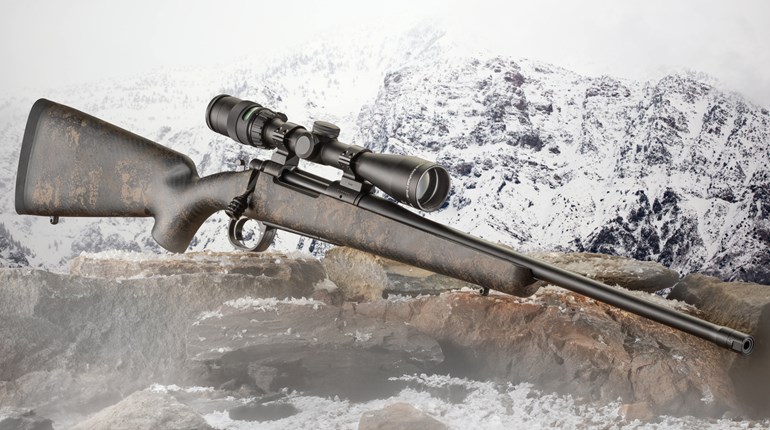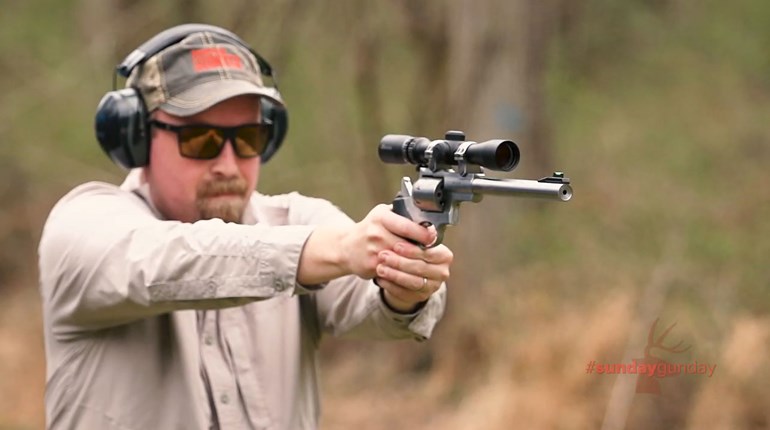
My, how suppressor technology has changed.
Just a few years ago most suppressors were made of steel, Inconel (nickel alloy) or a combination of steel and Inconel or steel and titanium. As a result, most weighed a pound or more, which doesn’t sound like much—that is, until you screw one on the end of a rifle. If it’s a lightweight rifle, the end-heavy feel created by adding this additional weight to the end of the barrel is dramatic.
These days however, a few companies are producing 100 percent titanium “cans” that are both strong enough to use with magnum calibers and light enough to not totally alter your rifle’s handling characteristics. I used the word “totally” because anytime you add anything to the end of a barrel, it’s going to alter the rifle’s feel somewhat. But some suppressors are much better than others in this regard. Take Silencer Central’s Banish Backcountry model, for example.
At just 7.8 ounces (a couple ounces more with a required thread adaptor) and 5.5 inches long thanks to its 100 percent titanium build, it’s incredible that the Backcountry is rated for any caliber up to .300 Remington Ultra Mag., yet it still reduces the rifle’s decibel level to below the threshold for damaging eardrums (around 140 dB). It’s touted to reduce the .308 Winchester down to 135 dB; .300 Win. Mag. to 137 dB and .300 Remington Ultra Magnum to 138 dB. This, of course, means you can hunt to your best ability without hearing protection yet not expect to receive damage to your ’drums if you take a shot.
 The .30 caliber Banish Backcountry, left, is a full 3.5 inches shorter and 6.5 ounces lighter than the full-size Banish 30, right.
The .30 caliber Banish Backcountry, left, is a full 3.5 inches shorter and 6.5 ounces lighter than the full-size Banish 30, right.
As I’ve discovered after my first suppressor purchase over 10 years ago, once you shoot a rifle that’s been suppressed, it’s not as enjoyable to shoot them any other way. If you don’t own one yet, just think of your truck or ATV’s muffler. Can you imagine having to drive either of them all the time without a muffler when you are so used to the quiet?
After sound suppression, the next in line on my list of suppressor priorities is size and then weight.
As a short guy, I carefully select my rifles and prefer snappy, 18- to 22-inch barrels so I can carry them easily up treestands and mountains. So, there’s nothing worse than negating my rifle’s handiness by adding a suppressor the size of a Coney Island footlong to the front of it, thereby making it feel more like a fishing pole than a rifle. The Banish Backcountry adds just 5.5 inches to my rifle’s overall length. It’s 1.6 inches in diameter—which is fairly insignificant during practical use compared to length, but it is this girth that allows the unit to be shorter yet still own enough volume for effective sound mitigation.
Of course, I always verify a scope’s zero with a suppressor installed before going hunting, but I’ve found that in general, the lighter and shorter the suppressor (as well as the shorter and stiffer the barrel), the less the suppressor tends to impact my rifle’s pre-suppressor zero. This has to do with barrel harmonics; there is no predictable way I’ve found to judge what adding weight to the end of a particular gun’s barrel will do to a bullet’s point of impact other than by shooting. In other words, adding nearly any suppressor to the barrel of your zeroed rifle will require readjusting your scope’s zero. It’s just the way it is. I found the Backcountry to be no different. At 100 yards, I had to adjust my scope from its non-suppressed zero, but only minimally.
Like most suppressors, this one uses a series of baffles—six in this case—that catch air produced by the cartridge’s explosion, redirect it and elongate the timeframe at which it exits the muzzle, thereby muffling the rifle’s report. Even the Backcountry’s baffles are made of titanium rather than steel like many others in an effort to reduce weight.
Finally, this thing is compatible with nearly any barrel thread pitch thanks to its modular design that accepts screw-in direct-thread adaptors. This direct-thread attachment system tends to be more accurate than the quick-detach systems that are so popular for AR-15s. On the other end, the Backcountry’s end cap is not modular; it’s permanently milled for .30-caliber bullets, though any smaller-caliber bullets can be shot through it as well.
While this review is focused on the actual Backcountry product, I should also tell you about the South Dakota company’s revolutionary silencer buying process that has removed the hassle and red tape. After choosing the Backcountry—or any suppressor online–you simply give Silencer Central the required information using e-mail and DocuSign. From there they submit your information along with that of the suppressor of your choosing to the ATF using its new eForm system. After your transfer is approved—anywhere from three to nine months—Silencer Center will mail your suppressor directly to your door. If you’re a hunter who’s tired of wearing hearing protection every time you wish to shoot your rifle—or perhaps your wife and/or neighbors are tired of hearing you shoot your rifle—I’d suggest this Backcountry suppressor.
In sum, if ever there was a suppressor built for hunters—specifically backcountry hunters who are concerned with every ounce they carry—the Banish Backcountry from Silencer Central is a great choice.
Technical Specifications
• Type: .30-caliber suppressor
• Material: titanium
• Attachment System: direct thread w/interchangeable thread adaptors
• Weight: 7.8 ozs. w/o thread adaptor
• Length: 5.5"
• Diameter: 1.6"
• Finish: Cerakote
• Cartridge Range: .17 HMR to .300 RUM
• Decibel Reduction: 30 dBs
• Full Auto Rated: no
• MSRP: $1,099; silencercentral.com




































